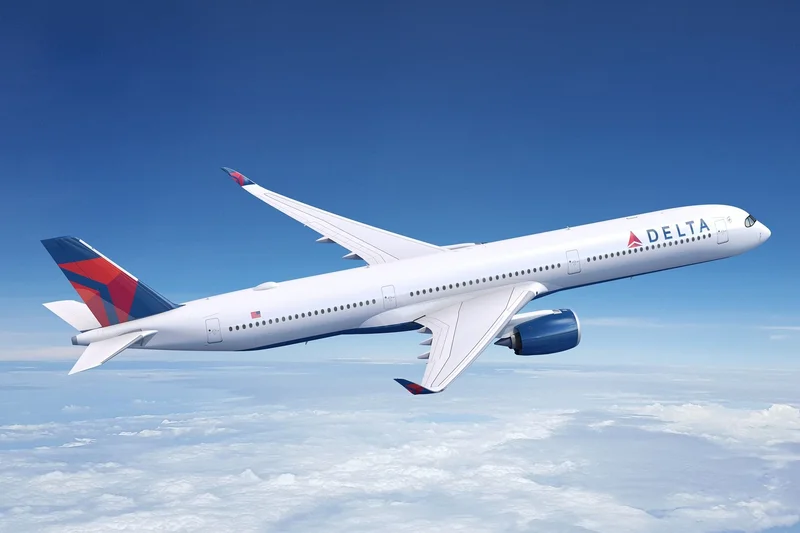Article Directory
On the evening of October 25th, on a Delta Airbus A220 parked at a gate in Pittsburgh, a simple, reflexive human motion cost approximately $70,000. A veteran flight attendant, a professional with 26 years of experience, armed the forward door for departure and then, in a moment of what can only be described as muscle-memory malfunction, lifted the handle.
You can almost hear it: the sudden, violent hiss of compressed gas, the nylon fabric of the slide scraping against the metal jetbridge, and the collective groan from passengers who instantly knew their travel plans had just evaporated. A Reddit post captured the immediate aftermath of the Delta Flight Attendant Mistake to Cost Airline Around $70,000 - Aviation A2Z with anecdotal precision: "Flight attendant said he was terribly sorry, no going home tonight."
The human drama is compelling. It’s easy to focus on the individual—the embarrassed flight attendant, the inconvenienced passengers. But to do so is to miss the real story. This event wasn’t an anomaly. It was a data point. And the data tells a far more interesting, and frankly, more damning story about the systems we operate in. This wasn't a freak accident; it was a predictable, recurring, and quantifiable operational failure.
The Statistical Certainty of Error
In the aviation industry, these events have a clinical, sanitized name: Inadvertent Slide Deployments, or ISDs. And they are far from rare. While airlines don’t typically broadcast these figures, historical data from Airbus has suggested that ISDs happen frequently—or, to be more precise, an average of up to three times per day across the global fleet.
Let that number sink in. Three times a day, somewhere in the world, a loud bang and a burst of yellow nylon signals a costly mistake.
This is where the story shifts from human error to a balance sheet problem. The cost to replace an emergency slide is substantial (estimated at $70,000 for this A220 model). If the slide is undamaged and can be repacked, the cost is still around $30,000 due to the meticulous manufacturer inspections and fees required. Using a conservative estimate, if even half of these daily incidents require a full replacement, the airline industry is leaking well over $35 million a year from this single, specific procedural flaw.
I see this as something akin to a rounding error in a massive financial algorithm. A single instance is negligible in the context of a multi-billion-dollar operation. But when that error repeats thousands of times, it becomes a material drag on performance. It’s a systemic bleed.

And this is the part of the analysis that I find genuinely puzzling. The Pittsburgh incident involved a 26-year veteran. This wasn’t a rookie mistake. It demonstrates that experience alone is not a sufficient safeguard against a flawed human-machine interface. The design of an aircraft door, which must be both an emergency exit and a routine entryway, creates a built-in potential for error. After thousands of cycles of opening and closing that door, is it really a surprise when a single step in the sequence is missed? From a data perspective, it’s almost an inevitability.
The Unimplemented 85% Solution
The most frustrating part of this entire equation is that a highly effective, low-cost solution has been known for years. It comes from Japan’s industrial safety programs, a method called Shisa Kanko, which translates to "point and call." The procedure is simple: before performing a critical action, the operator physically points at the object of the action (a lever, a button, a door handle) and verbally confirms the action and its expected outcome.
It sounds almost childishly simple, theatrical even. But the data on its efficacy is stunning. Studies have shown it can reduce operational errors by up to 85%. British Airways, to its credit, began implementing this very procedure for its cabin crews in 2023.
An 85% reduction. Let’s quantify that. Applied to the industry’s ISD problem, a near-zero-cost behavioral change could theoretically save over $30 million annually. There are few corporate initiatives in any industry that can promise that kind of return on investment.
This presents a series of questions for which I have no clean data. Why hasn't this been universally mandated by regulators or adopted by every major airline? Is the cost of a few hours of retraining for thousands of employees seen as prohibitive? Or is there a cultural resistance within the industry to a procedure that, on the surface, seems overly simplistic? What is the precise calculation an airline makes when it implicitly chooses to absorb millions in predictable damages rather than implement a procedural fix with a documented 85% success rate?
The silence on that front is telling. It suggests the cost of an ISD is treated as an acceptable "cost of doing business," a rounding error that executives are willing to tolerate. But for the passengers trapped on that plane in Pittsburgh, and for the flight attendant who made the mistake, it felt anything but routine.
A Failure of Process, Not People
When we read a headline about a flight attendant’s costly mistake, our instinct is to focus on the individual. We see a person, an apology, and a consequence. But the data tells us to look at the process. The $70,000 cost of that deployed slide in Pittsburgh isn't the price of one person's momentary lapse. It's the recurring fee the airline industry pays for its own institutional inertia. Blaming the human is the easy, and lazy, analysis. The real failure wasn't in the hands of the flight attendant; it was in the system that makes such a predictable error not only possible, but statistically certain.
